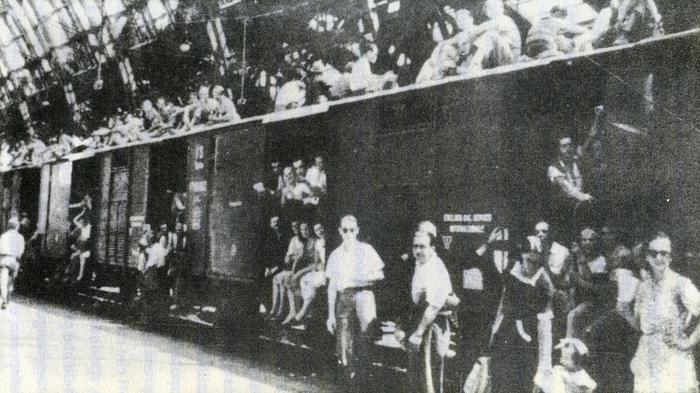"Train 8017 stopped on the line between Balvano and Bella Muro due to insufficient traction force, awaiting help": this was written in the telegraphic dispatch sent to the Potenza Inferiore station that night 80 years ago, between 2 and 3 March 1944. 8017 had stopped in the 'Armi' tunnel, in Basilicata, between the Balvano and Bella Muro stations of the Battipaglia-Potenza-Metaponto line, and had delivered, with its deadly load, the most serious disaster in Italian railway history ( and one of the most serious of all): over 500 victims - unofficial toll, the official one has never been made - suffocated by the smoke of the locomotives.
The dead were hastily buried in a mass grave in the small cemetery of Balvano (Potenza), unable to accommodate so many bodies.
Between 9pm and 10pm on March 2, 80 years ago, the 8017 left the Battipaglia station (Salerno) and began the climb towards Potenza.
It was the time of the Second World War: trains, many of which were made up of so-called "furnished wagons" (i.e. freight wagons equipped with wooden benches), were few and not sufficient to meet the needs of the populations.
Travelers, with or without tickets, stormed every type of train and made do as best they could, traveling on the roofs of the carriages, in the retreats and even on the buffers.
Everything was transported, even live animals, and the exchange of goods was regulated solely by the laws of the "black market".
Even the 8017, although classified as a freight train, was packed with travellers: at 00.50 on 3 March it left from Balvano station (Potenza), entered the "Galleria delle Armi", uphill, and shortly after stopped, perhaps due to overweight.
The train never arrived at the next station of Bella-Muro (Potenza).
The thick smoke released by the two coal locomotives that pulled the many freight wagons invaded the tunnel, and the poisons, mainly carbon monoxide, killed hundreds of people, many of whom were sleeping.
The exact number of victims of the disaster has never been established: in the Balvano cemetery - where the dead were buried in two mass graves - a plaque indicated the victims as 509: 408 men and 101 women.
But the calculation seems not to have taken into account the fact that some bodies were buried elsewhere at the request of relatives.
Why did 8017 stop in the tunnel?
Was it really due to the excessive weight being towed or due to a fault in one of the two locomotives?
And, with the train at a standstill, why did the engineers of two such high-powered locomotives (a '480' and a '476') fail to remove the train?
Misunderstanding between them or with the brakemen who, by tightening the brakes, nailed the train to the rails?
Was the rescue prompt or delayed?
Questions which have never been answered and which still leave the mystery of the causes of the most serious railway disaster in Italy unsolved.
Reproduction reserved © Copyright ANSA

